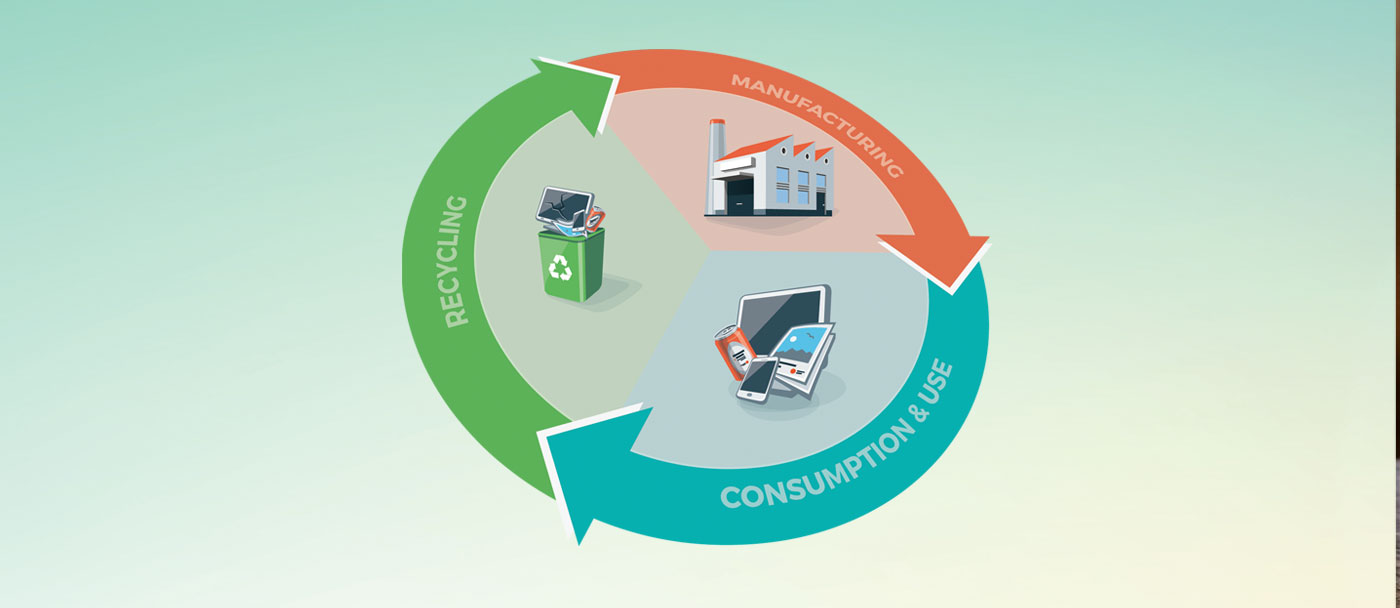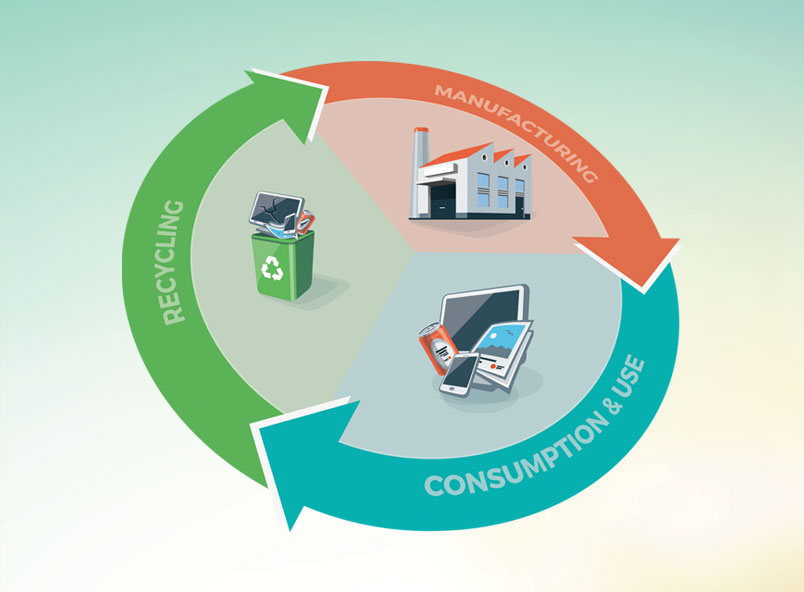



Policy initiatives around the world have begun to revolve around the idea of the ‘circular economy’. This is largely based on three principles: to design out waste and pollution; to keep products and materials in use; and to regenerate natural systems.
Many industrial processes are still considered to be ‘linear’ – meaning that raw materials are used, processed into a certain product and then disposed of as waste. This process leads to the depletion of finite reserves and creates products that are disposed of in landfills or incinerators.
The notion of a circular economy reaches far back into history and philosophy. In a 1976 report for the European Commission (EC), the authors of a study offered their vision of an economy in loops (signifying the circular economy) and its impact on job creation, economic competitiveness, resource savings and waste prevention.
Considering the global nature of the concept, implementation of the circular economy model is poised to affect economic activities across all sectors. It will require operators – large and small businesses, organisations and individuals – to work effectively together.
The transition cannot be limited to actions and adjustments that reduce the negative impacts of the linear economy. Rather, it should result in a systemic shift that creates long-term achievements and resilience; contributes business and economic opportunities; and delivers benefits for the environment and society as a whole.
Since 2010, the idea of the circular economy has gained traction in the EU as a political issue and economic objective. On Dec 17, 2012, the EC endorsed a document entitled ‘Manifesto for a Resource Efficient Europe’ prepared by the European Resource Efficiency Platform.
The objective was to provide high-level guidance to the EC, EU member-states and private actors on the transition towards a more resource-efficient economy. The manifesto states: ‘In a world with growing pressures on resources and the environment, the EU has no choice but to go for the transition to a resource-efficient and ultimately regenerative circular economy.’
The European Resource Efficiency Platform has called on business, labour and civil society leaders to support resource efficiency and the transformation to a circular economy and society. It said this offers a path out of the current crisis towards a reindustrialisation of the European economy on the basis of resource-efficient growth that will last. A circular, resource-efficient and resilient economy should be achieved in a socially inclusive and responsible way.
In 2015, the EC adopted the document entitled ‘Closing the loop – An EU action plan for the circular economy’. This outlines both general and material-specific actions to address challenges in product design; production processes; consumption; moving from waste to resources; and innovation, investment and other cross-cutting issues.
The Action Plan identifies materials and sectors that face specific challenges in the context of the circular economy and which should be addressed in a targeted way:
– Plastics
– Food value chain
– Critical raw materials
– Construction and demolition
– Biomass and bio-based products
– Fertilisers
In January 2018, in order to advance the Action Plan, the EC adopted a revised set of measures in the context of the EU’s ‘2018 Circular Economy Package’. The measures include:
In November 2018, Jyrki Tapani Katainen, the EC Vice-President for Jobs, Growth, Investment and Competitiveness – also in charge of the EC’s circular economy policy dossier – identified the circular economy as a current mega-trend that should also be “a huge issue for the next Commission”. He was referring to the next College of Commissioners who will take office for a five-year term at the end of 2019.
He underlined that, in the forthcoming College, there should again be a Vice-President in charge of the issue. In general terms, it is evident that the EC is strongly committed to advancing the idea of the circular economy and related policy objectives in line with the 2015 Action Plan.
Link to sustainability
Efforts to pursue the circular economy will transform the EU economy into a more sustainable one. This is poised to affect a wide variety of products, habits and actions, in order to make production processes and products more sustainable in the EU and beyond. This will inevitably affect palm oil and its use in the EU.
Firstly, all palm oil imports will have to be sustainably-sourced. The debate on what is sustainable palm oil, and which criteria should apply, will be an important decision for palm oil producing countries. They should not let the debate be unilaterally steered by the EU, where oil palm cultivation and palm oil production are being negatively framed by special interests.
Secondly, one aspect of achieving a circular economy is the shift towards the use of energy from renewable sources, which should, over time, lead to the elimination of fossil fuels. This ought to be an important opportunity for palm oil. However, in the EU, palm oil biofuels are threatened by recently updated rules on renewable energy sources.
The revised Renewable Energy Directive provides that the contribution of biofuels, bioliquids and biomass fuels produced from food or feed crops that have a high risk of indirect land use change (ILUC) – and which record a significant expansion of the production area into land with high carbon stock – are to be limited to the 2019 consumption levels and then phased out by 2030.
Implementing rules determining the ILUC risk of biofuel feedstocks were adopted in May 2019. Palm oil was the only biofuel feedstock considered to have an ILUC risk and, must therefore be phased out by 2030.
Thirdly, the trend towards a circular economy may provide additional opportunities for oil palm growers and palm oil producers. These could relate to reducing the production and use of plastic. For instance, palm oil mill effluent (POME), a wastewater generated from milling activities, now requires effective treatment before discharge into water-courses due to its polluting properties. Research indicates that POME could become a source of degradable organic material that could be converted into value-added products and fine chemicals. Developments like this would advance the objectives of the circular economy.
The side-effects of the linear economy are increasingly becoming clear in terms of air pollution and the production of waste, in particular plastic waste that pollutes oceans and endangers marine life. While the move towards a circular economy will result in the phase-out of certain products – like fossil fuels and derived products like plastics – as well as the abolition of certain processes, it also provides opportunities for economic operators.
Oil palm cultivators and palm oil producers should embrace the concept and contribute towards the inevitable global economic revolution. This would greatly improve the image of palm oil within the EU, to counter the influence of negative assumptions and campaigns.
MPOC Brussels